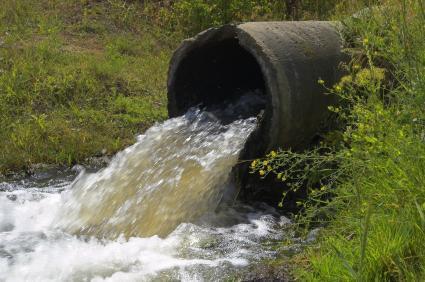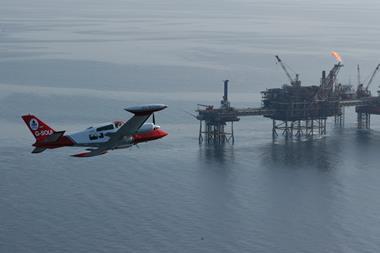As the media’s eco focus grows, the public is becoming increasingly clued up about green matters. That means companies must ensure their environmental strategies are top notch or face harsh public scrutiny

The corporate attitude to the environment has changed significantly in recent years. “The change has come about due to the increase in new environmental officers and the evolving image that these companies want to project. The environment has become a political issue due to pressure from NGOs and the public,” says Ferma general secretary and chair of environmental working group Pierre Sonigo. “Companies had to become more aware and moderate the negative effects they were having on nature.”
But although companies know their approach has to change, they are still often unsure of their legal obligations. “One of the key risks is that companies don’t understand the developments in environmental regulation and the consequences these developments will have on companies.
“You would expect bigger companies to have the resources to better understand their environmental exposures but we have found that this is not always the case,” says AXA Corporate Solutions head of casualty in the UK John Gibbins.
The regulatory and social landscape has changed in the context of environmental liability but key risks remain. “The main risk is accidental pollution; a valve that is leaking or a pipe that breaks,” Sonigo says.
You would expect bigger companies to have the resources to better understand their environmental exposures but we have found that this is not always the case.”
John Gibbins, AXA Corporate Solutions
Water pollution is a sensitive subject because of its portrayal in the media. Images of stagnant water or dead sea life mean an accident can quickly become a media scandal. “Pollution of rivers is a major liability for companies; anything that has to do with water is a key risk. If a company is involved in anything that could lead to the contamination of a water supply, they need to be very careful,” says Polestar UK print group risk manager Gary Marshall.
“Rivers are much cleaner than they used to be and there is a desire to keep that trend going. So if companies pollute something that is very clean, they will stand out head and shoulders above everybody else.”
While high-profile pollution stories are making companies take environmental liability more seriously and the public is increasingly concerned with the diversity of life in the ecosystem, air pollution is a liability that doesn’t get the same level of media coverage. “Air emissions are seen as a polluting risk but that doesn’t come over so strongly in the media,” Marshall says.
Sponsored word
Navigate the changes
Although environmental protection has improved within industrial companies over the last decades, new challenges are arising. These problems include the increasing speed of change of processes and material flows, mergers and acquisitions, and growing public awareness.
Corporate companies change literally every day, and one consequence of inconsistent environmental risk management practices is an increased probability of occurrence of an uncontrolled environmental incident. It is therefore critical for risk managers to keep a tighter rein on environmental issues.
With its teams of more than 120 specialists, AXA MATRIX Risk Consultants provides multi-peril environmental risk consulting for risk managers and underwriters worldwide. Thanks to its long-term experience in handling environmental risks and claims, setting up and managing remediation programmes, and loss prevention consulting, AXA MATRIX Risk Consultants is able to provide risk managers with a comprehensive view on environmental risks.
For European regions, AXA MATRIX Risk Consultants is able to offer appropriate environmental risks analysis respecting European regulations and restrictions, especially EIL (environment impairment liability) and ELD (European Liability Directive). The risk assessment approach includes risk-level definition of production processes, spatial analysis, identification of neighbourhood exposures and grading per location.
AXA MATRIX also provides risk assessment on a worldwide basis. With its advanced tools, relying on geographic information systems for spatial analysis and modern online applications, and its proprietary risk evaluation tools, AXA MATRIX Risk Consultants provides clients with state-of-the-art assessment results.
Visio@RiskTM helps risk managers visualise the potential environmental impact of their company’s plants regarding environmental sensitivity. Other web-based services such as SCAN@RISK© assist in gathering relevant information, enabling organisations to identify and visit only those sites with significant exposure. AXA MATRIX Risk Consultants’ environmental loss prevention reports can also be customised and include detailed recommendations for risk improvement.
Hans-Peter Koslowsky, liability loss prevention consultant, AXA MATRIX Risk Consultants, Germany
It depends on a company’s operations - if it runs a manufacturing plant in an industrial valley, air pollution could be a serious issue.
“Air pollution can have a much greater impact - everyone can see it and smell it. But groundwater and soil pollution is something nobody can see and often not smell; it may go unnoticed for years. And remediation of this kind of contamination can be very expensive,” says AXA MATRIX Risk Consultants loss prevention consultant Hans-Peter Koslowsky.
Disposing of hazardous materials is an ongoing problem in construction, “particularly if you think about asbestos, which can often catch companies out”, Marshall says. For companies that are involved in building or have contracted a construction company abroad, this can be a serious risk as building regulations are often entirely different, meaning that companies can unknowingly break the law.
One of the major parts of this is environmental risk mitigation, which is what the company can do to prevent it from escalating.”
Cliff Warman, Marsh
Once a company understands the risks involved, they need to be able to mitigate the known risks. “One of the major parts of this is environmental risk mitigation, which is what the company can do to prevent it from escalating. This could be as simple as having clean-up materials on site or the ability to close down your drainage system at the flick of a switch,” Marsh environment practice leader Cliff Warman says.
Another way that companies can reduce exposure to environmental disasters is by establishing a relationship with the local environmental regulator. In the UK, this is the local environmental health officer, which could give risk managers insights into the possibility of industrial accidents and the vulnerabilities in the local environment. Establishing a relationship with local authorities would also allow companies to keep up with, and have a greater understanding of, regional legislation.
Online engagement
Companies can proactively use the internet to engage with stakeholders, fostering a transparent approach that would reduce hostility towards the company. Businesses can also use the internet to monitor activist groups and understand their attitudes and potential grievances, which could allow them to mitigate the risk of protest and sabotage.
In recent years, the insurance industry has been researching and developing products following the arrival of the Environmental Liability Directive and other regulations. As a result, the knowledge of insurers and brokers is indispensable for companies trying to understand their exposures and how best to transfer risk to the market.
An environmentally friendly approach can add real value to a company’s brand - the Ftse4Good index and the Dow Jones Sustainability index benchmark companies against each other based on their environmental performance.
“Increasingly investors are taking this kind of information into consideration before they invest in a given company; the environmental agenda is certainly going up the investment community’s list of key risk issues,” says Warman.




















No comments yet